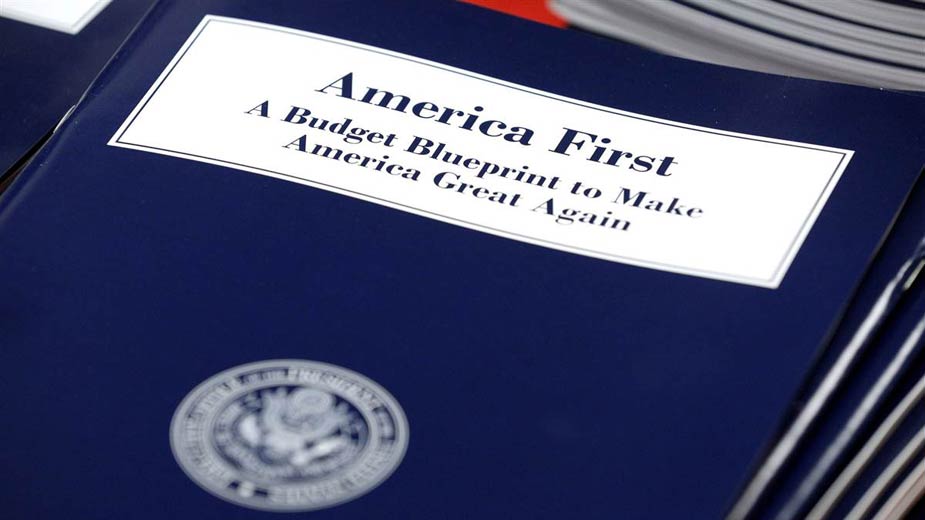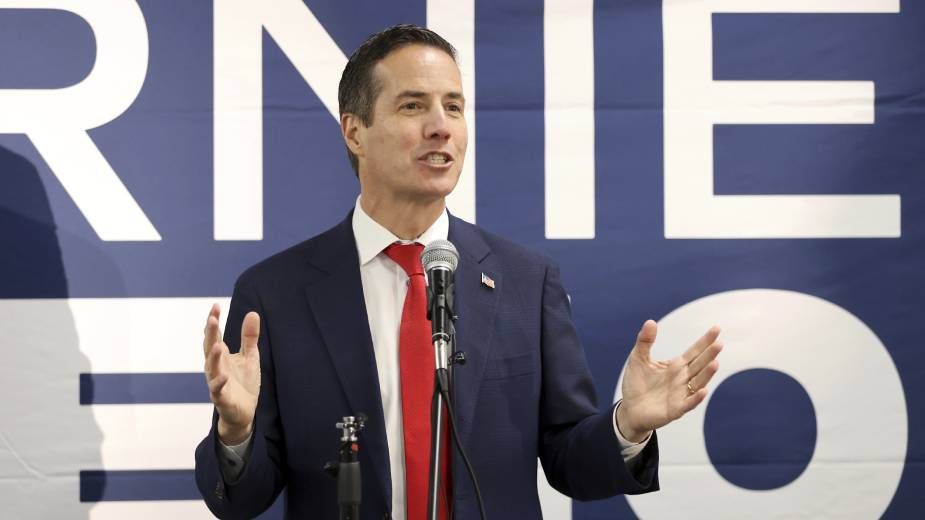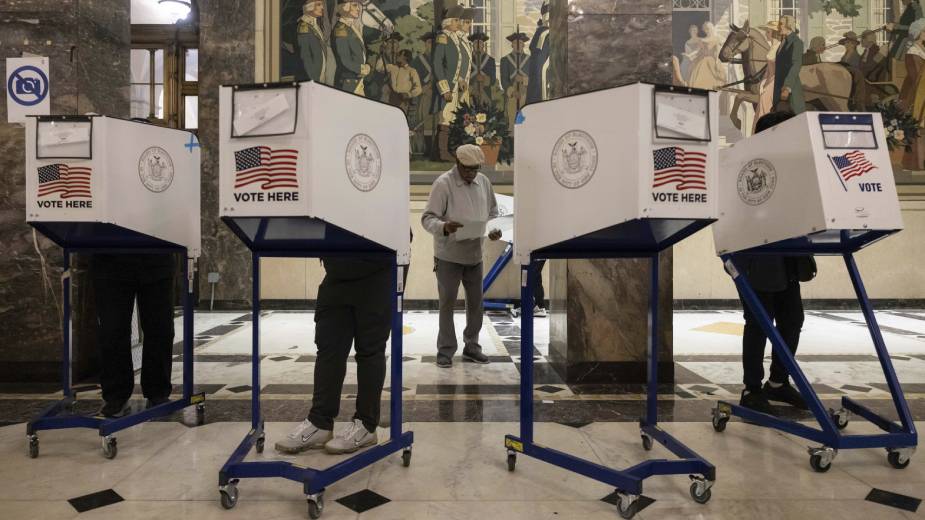Trump Budget Draws Reaction from Inside, Outside Congress
WASHINGTON – U.S. Rep. Bill Johnson said Tuesday he will not be a “rubber stamp for any proposal from the White House” following the unveiling of President Donald Trump’s proposed $4.1 trillion budget.
Although broadly supportive of Trump’s priorities, Johnson, R-6 Ohio, pledged to do “everything in [his] power” to ensure that the Appalachian Regional Commission receives full funding in the 2018 budget. ARC is one of several commissions and agencies targeted for elimination in the 2018 budget.
Johnson was one of many officeholders and outside groups that weighed in on the document the White House released Tuesday.
The Appalachian Regional Commission is “critically important to the people of eastern and southeastern Ohio,” he said. Johnson also expressed concern over potential reduction of funds for programs under the Office of National Drug Control Policy.
“There are areas of federal, discretionary spending that are wasteful and/or duplicitous that should be looked at very closely. But funding going towards ARC and the opioid fight should not be on the cutting block,” Johnson said.
The president’s budget proposal – unveiled as “A New Foundation for American Greatness” — would “kick-start an important and overdue debate [regarding] the need and effectiveness” of federal programs, Johnson said. As a member of the House Budget Committee, he looks forward to reviewing it. The proposal is “just a blueprint,” and the final budget still must be approved by Congress, he noted.
U.S. Sen. Rob Portman, R-6 Ohio, said he is pleased the Trump Administration “changed course” and would support the work of the Office of National Drug Control Policy and its “essential programs” to fight drug addiction.
“We must continue to support these and other programs, such as CARA and the CURES law, which are aimed at prevention, treatment and recovery services that so many Americans desperately need,” he said.
Portman also is pleased that the spending blueprint includes increased funding for the cleanup work at the former uranium enrichment plant in Portsmouth. But he parted with the White House on the proposed elimination of the Great Lakes Restoration Initiative, a “bipartisan program helps protect our environment and strengthen Ohio’s economy,” he said.
“As a former White House budget director myself, I know it’s a tough job. You have to balance competing priorities and be respectful of every hard-earned taxpayer dollar,” he said. “I believe we must work to balance our budget without raising taxes, and I think we can do that by advancing pro-growth policies like tax and regulatory reform as well as restraining spending.”
U.S. Rep. Mike Kelly, R-3 Pa., through a spokesman, said he had not read the budget and would not have an official statement. The congressman looks forward to reviewing its details and “expects it to be a major improvement over the irresponsible proposals put out every year by the last administration.”
As expected, Ohio Democrats were pointed in their criticisms.
“Ohio families know that making a budget is about choosing priorities. This budget makes it clear Ohio families are not this administration’s priority,” U.S. Sen. Sherrod Brown, D-Ohio, said. “Instead of investing in our communities so they can create jobs, combat the opioid epidemic, upgrade their infrastructure, and protect our clean water, this budget will leave our towns and cities scrambling to support working Ohioans.”
In particular, Brown took aim at the proposed elimination of the Low-Income Home Energy Assistance Program, which last year provided more than $145 million in assistance to Ohio; the Manufacturing Extension Partnership, which helped manufacturers increase sales and achieve cost-savings; and the Community Development Block Grant program, which provided $137.5 million in funding for Ohio in fiscal 2016.
Also proposed for elimination is the Economic Development Administration. In fiscal 2015 and fiscal 2016 , EDA provided more than $8.2 million for 21 Ohio projects, which applicants estimate will help create or retain nearly 2,600 jobs and leverage over $161.5 million in private investment, Brown said.
The budget also cuts funding for new projects under the Department of Transportation’s TIGER Grant program, which funds multimodal investments to revitalize cities and promote freight movement, and the Capital Investment Grant program, which expands rail and bus transit services. Several Ohio communities have previously benefited from these programs, and new applications, including for Youngstown’s Smar2t Corridor, would be prevented for applying for funds, Brown said.
U.S. Rep. Tim Ryan, D-13 Ohio, characterized the budget as “a recipe for decline, suffering and mediocrity” in a statement.
“This budget is nothing more than a laundry list of broken promises,” said Ryan, who serves on the House Appropriations Committee. “Again. President Trump’s brazen and indiscriminate cuts to vital social and jobs programs to finance tax cuts for billionaires and special interests is an unconscionable move that leaves hardworking Americans worse off. It will be devastating to investment, stifle innovation and suppress job creation. This budget is a nonstarter.”
The budget provides $3 billion less for Community Development Block grants and $1.1 billion less for other programs that have helped communities like Youngstown, Ryan noted.
He criticized proposed cuts to the Department of Health and Human Services and the National Institutes of Health and its disinvestment in the public school system. The budget “cuts programs that help minority students access higher education, eliminates before- and after-school programs and other student enrichment programs that help students succeed, and slashes funding that would ensure that students have access to great teachers and that those teachers have the tools that they need,” he added.
Groups outside the government also weighted in on the president’s proposal.
The Main Street Alliance, a network of small business coalitions, said small business owners and their communities would be “devastated by this type of far-reaching, upward redistribution of wealth [that] would have a multigenerational impact on the health of the local economies that support small businesses,” the group said.
“President Trump came to the White House promising that his business acumen would bring unprecedented prosperity to Main Street and Wall Street alike. But there’s no wisdom in this budget, which proposes divesting trillions of dollars from critical public programs – basic health care, public schools, affordable housing, food assistance programs, and even Social Security – while also giving extremely wealthy individuals and companies a $5.5 trillion tax cut,” the organization said
American Federation of Teachers President Randi Weingarten predicted Trump’s “cruel” cuts to health care would make Americans sicker and poorer, and deny life-saving care to people who need it the most.
“Trump’s budget slashes more than $800 billion from Medicaid, gutting a program that more than 70 million low-income children, adults, people with disabilities, and the elderly rely on — and one the president promised to protect,” she said. “On top of that, Trump handicaps our health-care workforce by cutting training programs for nurses and doctors, and he undermines communities’ ability to combat the rise of the opioid epidemic.”
Stephen E. Sandherr, CEO of the Associated General Contractors of America, said the budget, as a policy document, is “an important, and much-needed, first step” for identifying the best ways to pay for needed improvements and expansions to the nation’s aging infrastructure. Further, Trump “rightly appreciates the need to increase investment levels significantly above current amounts,” he said.
“While it is easy to criticize specific elements of this or any other proposed budget, the president should be commended for doing what too few other politicians have been willing to do: make it clear that we need to make tough choices about future spending priorities, be willing to rethink long-held programmatic assumptions, significantly increase funding for America’s infrastructure and find new ways to leverage private-sector resources to supplement federal investments,” Sandherr said.
In response to the proposed elimination of the Institute of Museum and Library Services, American Library Association President Julie Todaro said the Trump Administration is using the wrong math when it comes to libraries. The nation’s more than 120,000 public, school, academic and special libraries are visited more than 1.4 billion times a year by hundreds of millions of Americans across the country, Todaro said. More than 80 major corporations and trade associations called libraries “critical national infrastructure” in a letter to U.S. senators.
“To those who say that the nation cannot afford federal library funding, the American Library Association, American businesses and millions of Americans say emphatically we cannot afford to be without it,” she said.
Copyright 2024 The Business Journal, Youngstown, Ohio.



